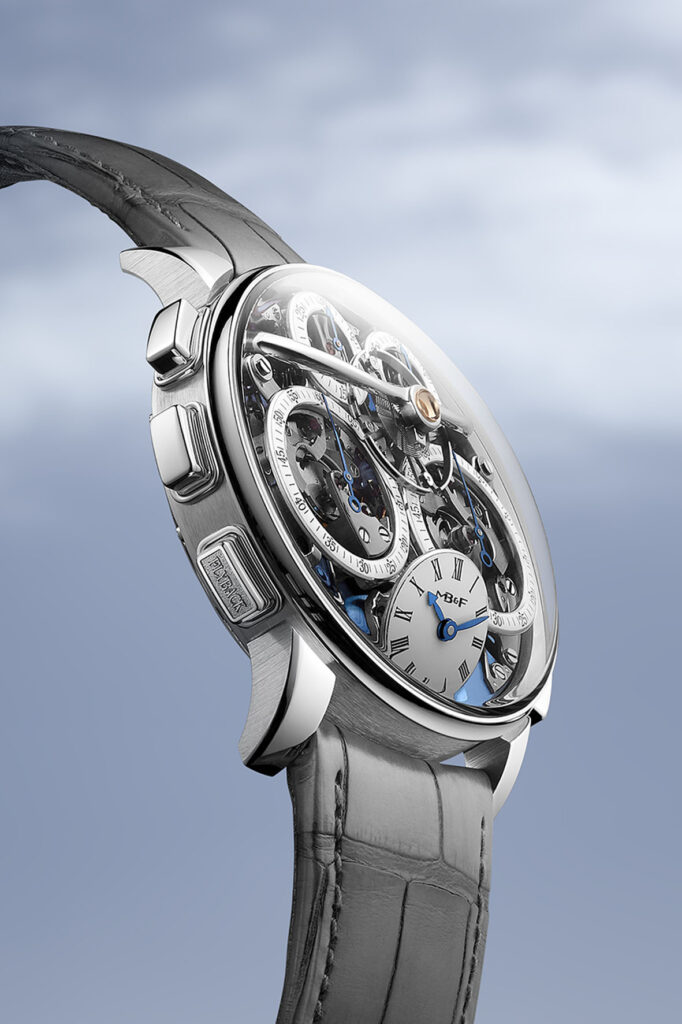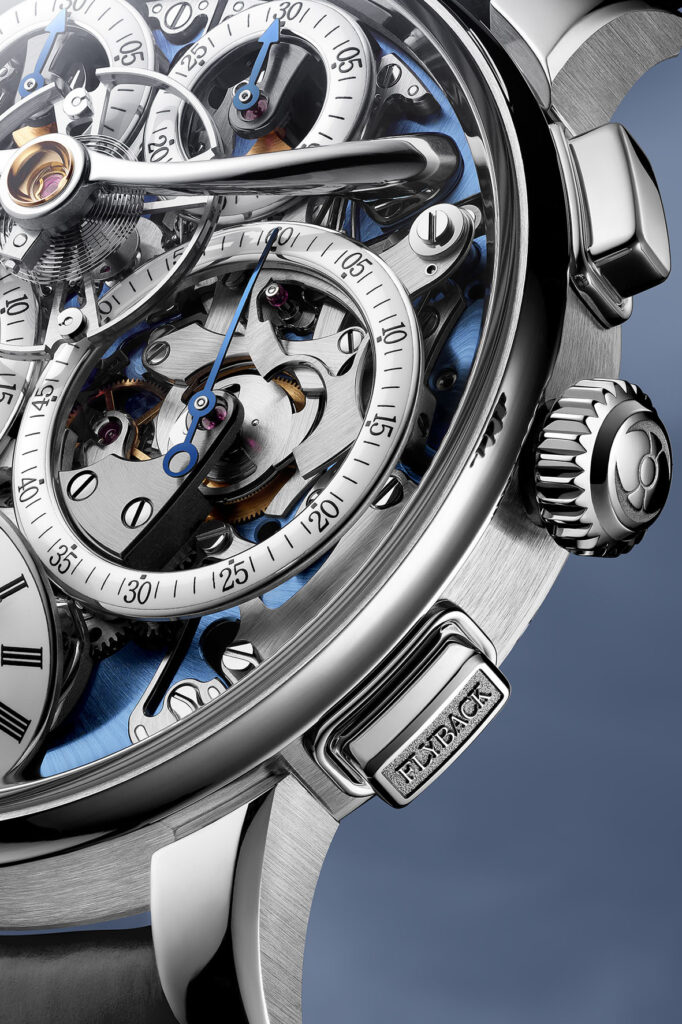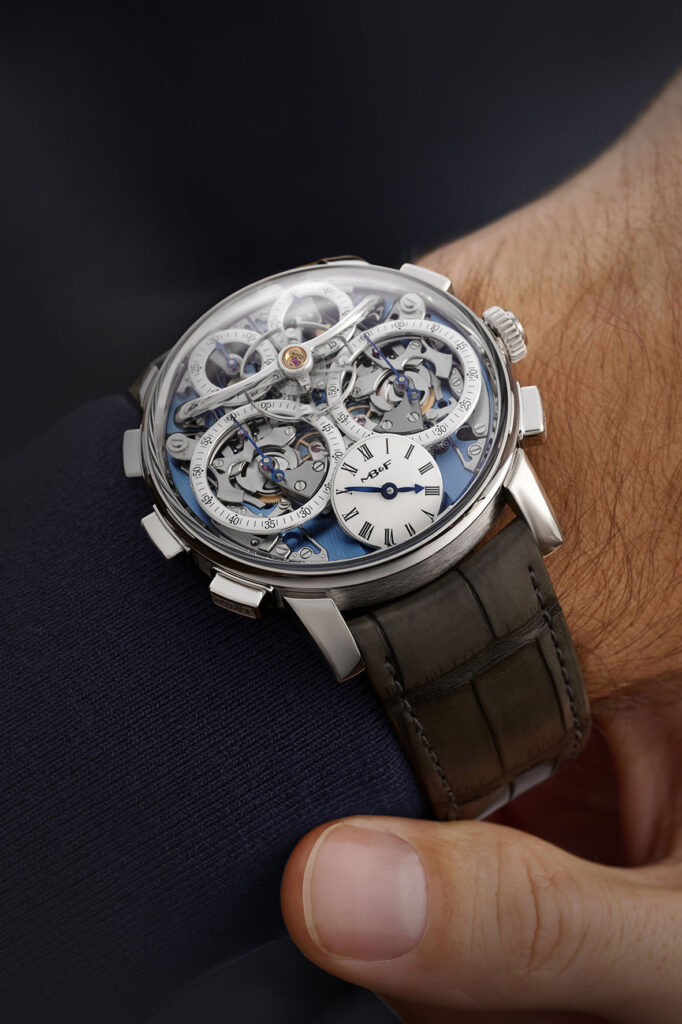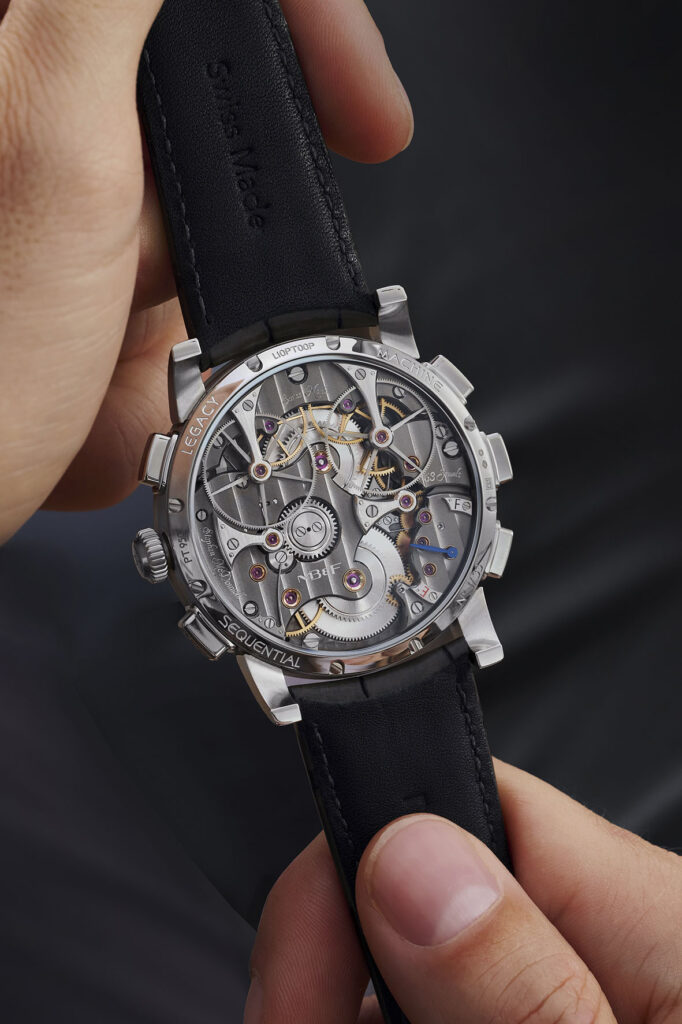MB&F: LM Sequential Flyback Platinum
31 May 2024In 2022, MB&F unveiled its Legacy Machine Sequential EVO, a twin chronograph that opened up a world of timing possibilities. This ground-breaking chronograph redefined the chronograph as we knew it, winning the hearts of collectors and the coveted GPHG ‘Aiguille d’Or’ award the same year.
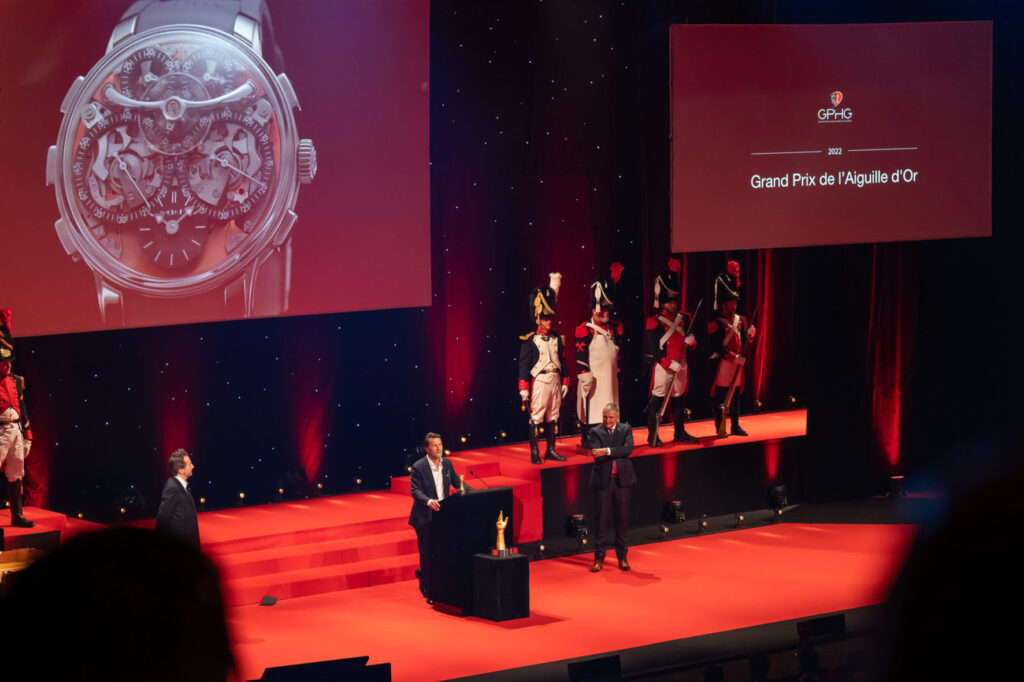
Conceived by Stephen McDonnell, one of the original MB&F Friends and the mastermind behind the 2015 LM Perpetual, the LM Sequential EVO was one of those timepieces that was so profoundly useful that it made you wonder why no one had thought of it before. Multiple timing modes allowed you to time everything from two athletes at the same time to consecutive lap times around a track, and even two different dishes in the oven, to name a few of its extremely practical applications.

But if the LM Sequential EVO wasn’t mind-blowing enough, there was another feature that Stephen and MB&F were keen to include: the flyback function. Stephen’s original prototype movement was actually designed with a flyback system on the left-hand chronograph and provisions for it were built into the LM Sequential EVO. But it was extremely complicated to perfect with the watch taking nine months of prototyping, four of which were dedicated to the flyback function alone. Add to this six different re-designs, and all the work and components that went with them, and McDonnell felt that it would be unwise – reckless even – to release the watch with a flyback when there were so many unproven elements in play.
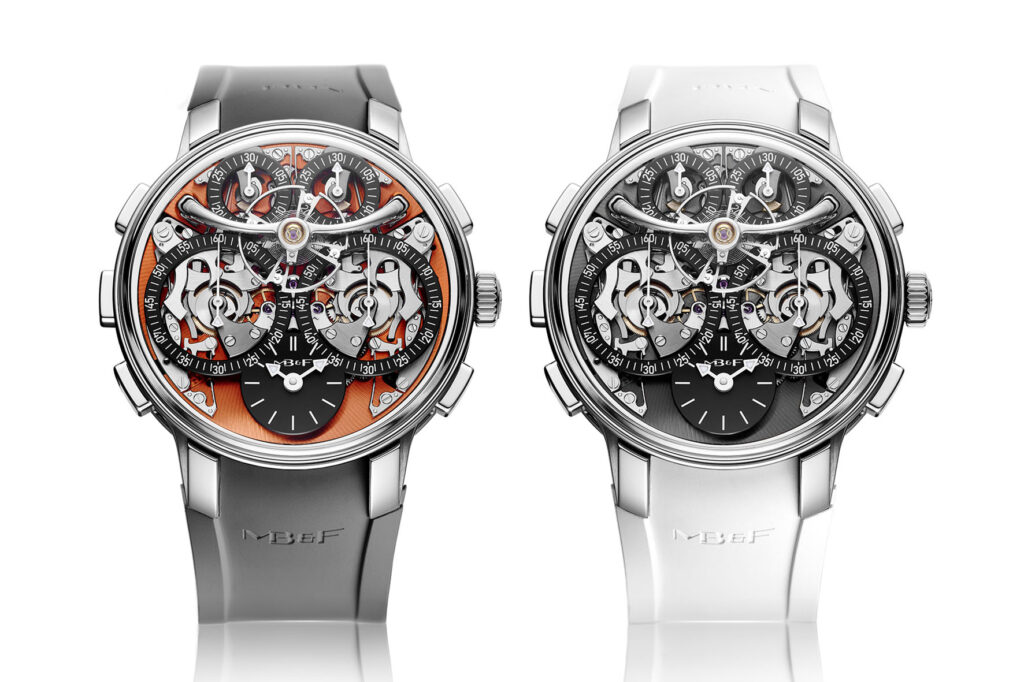
But the dream was there, right from the very beginning, and everything was designed to be able to incorporate it at a later date. The chronographs could have been conceived in several different ways, but only one of these configurations would allow the inclusion of a flyback, changing the fundamental way the chronographs were designed.
The internal jewelling of the vertical clutches is the key to the whole Sequential chronograph, and the new flyback system also requires jewelling, without which it would not work. The system is very subtle, and a great deal of work went into reducing all the friction to a minimum so that the flyback did not cause the return-to-zero to block. To achieve this, McDonnell incorporated a special jewelled roller into the flyback mechanism. Such a component is unavailable directly from any supplier of jewels, so for the first prototype, McDonnell made the jewel himself in order to prove the concept of this ground-breaking mechanism (one of five patented elements).
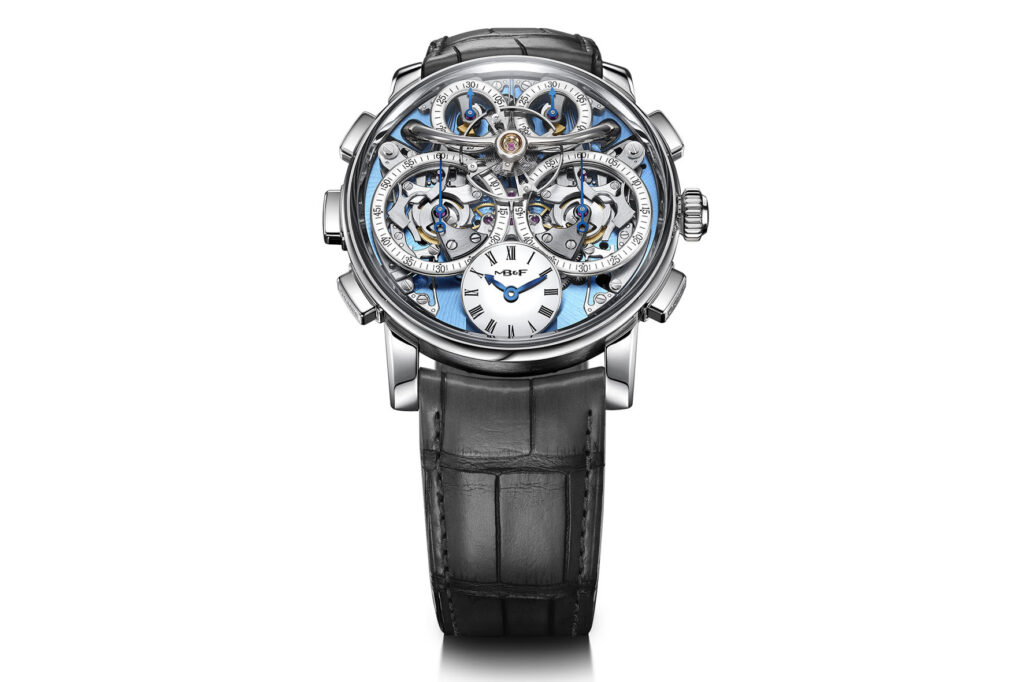
Two years of secret-keeping and testing were required so that the system would be robust enough in the long term, and now the LM Sequential Flyback Platinum is ready, steady, go!
THE NEW LM SEQUENTIAL FLYBACK PLATINUM
The LM Sequential Flyback Platinum features the same layout as the LM Sequential EVO with two chronograph displays. One has its seconds display at 9 o’clock and minutes display at 11 o’clock. The other has its seconds display at 3 o’clock and minutes display at 1 o’clock. Each of these chronographs can be started, stopped, and reset completely independently of the other, using the start/stop and reset pushers on their respective sides of the case. With the new flyback function, the reset pushers also trigger the flyback if the corresponding chronograph is running. These pushers make up the four chronograph pushers you would usually associate with having two chronograph mechanisms in one watch.
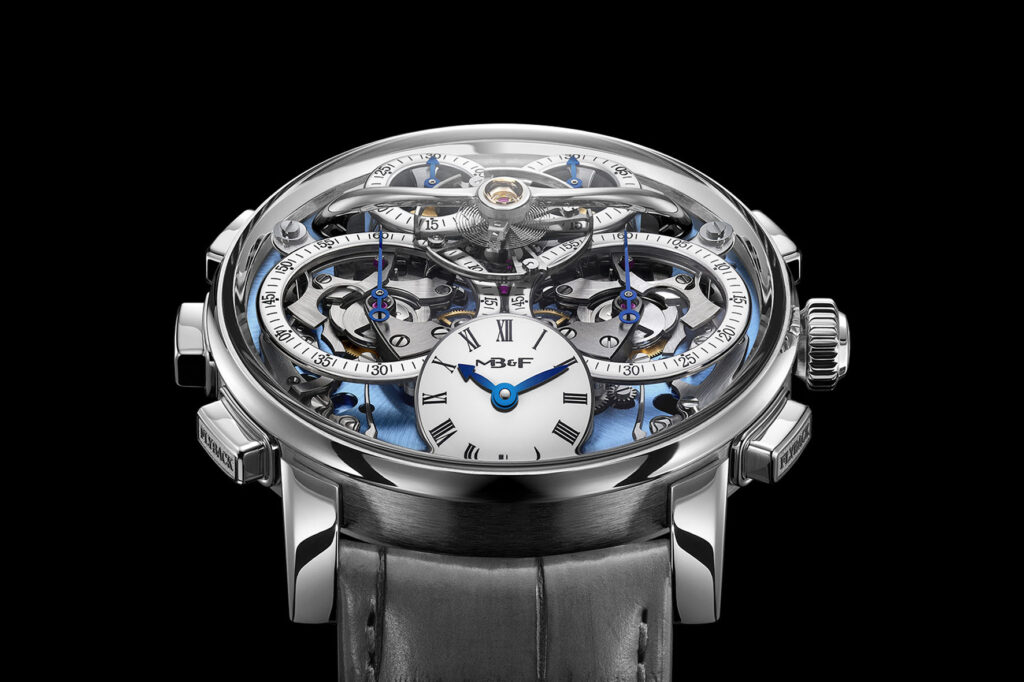
However, there is a fifth pusher, called the Twinverter, located at the 9 o’clock position. This “magic button” as Stephen likes to call it, is the secret that elevates the functionality of the LM Sequential timepieces beyond any existing chronograph wristwatch. It controls both chronograph systems, operating as a binary switch that inverts the current start/stop status of each chronograph. This means that if both chronographs are stopped, pressing the Twinverter causes both of them to start simultaneously. If they are both running, the Twinverter makes them stop. And, if one is running and the other is stopped, the Twinverter stops the one that is running and starts the one that is stopped.
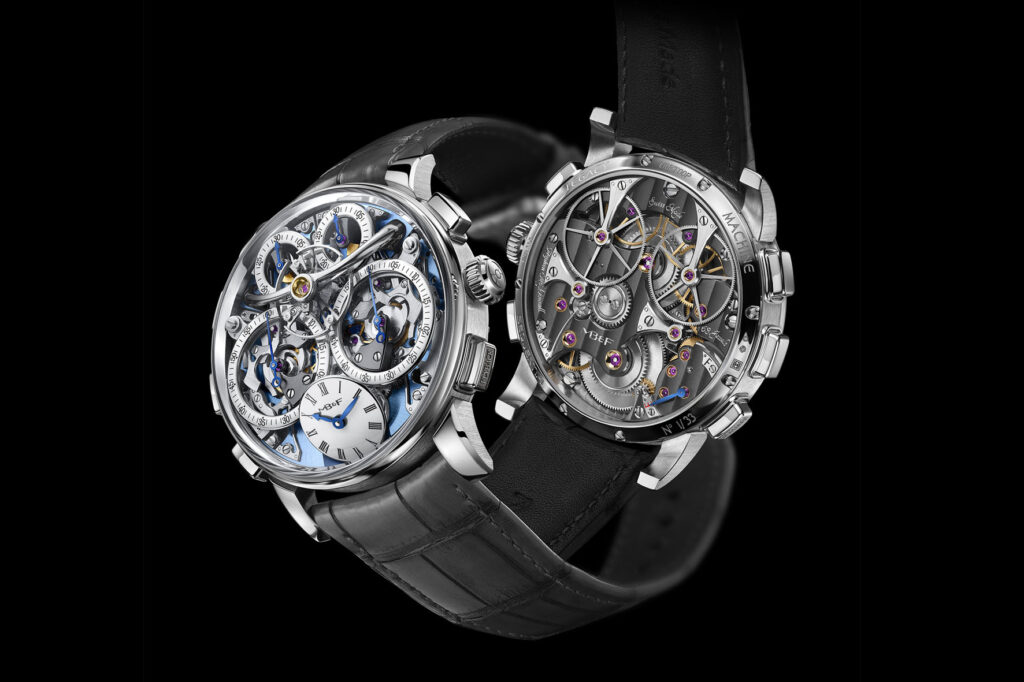
In terms of practical applications, these functions allow the chronograph to be useful in numerous situations, as the following examples illustrate:
Independent mode:
Imagine the preparation of a meal, where different things need to be cooked for different periods of time, at different points in time. You would operate the two chronographs via their respective pushers — for instance, starting one when you put your pasta into boiling water and starting the other when the vegetables go in the oven. In fact, this application comes in handy in all areas of personal productivity. At the gym, for example, when trying to optimize your physical workout routine, one chronograph can be set to time your entire session whilst the second is used to record your time at each station, or the downtime in between. In this example, the new flyback function can come in handy to swiftly reset and restart the timing sequence with a single press on the reset button, combining the three steps – stop, reset to zero, and re-start – in one.
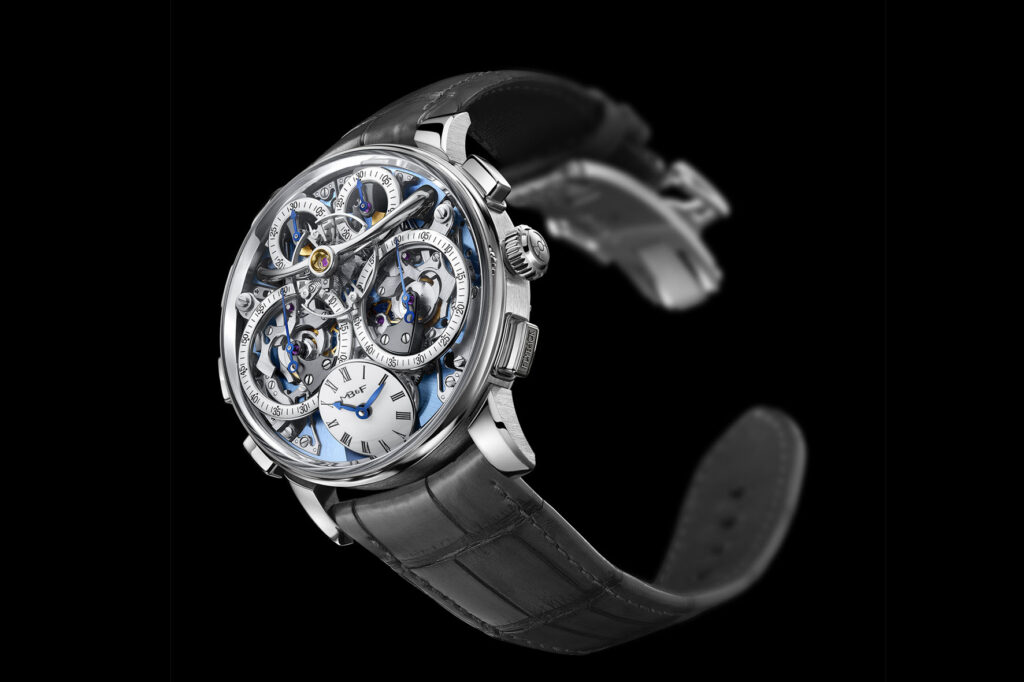
Simultaneous or split-second mode:
This mode can be used in a race involving two competitors, starting simultaneously. The Twinverter allows the wearer to start both chronographs at exactly the same time, but the different end times can be easily recorded by pressing each chronograph’s individual start/stop pusher. To note, the durations of the events can exceed 60 seconds, which is the limit for the vast majority of split-second chronographs on the market. In this mode, you can also use the new flyback function if you want to quickly restart timing.
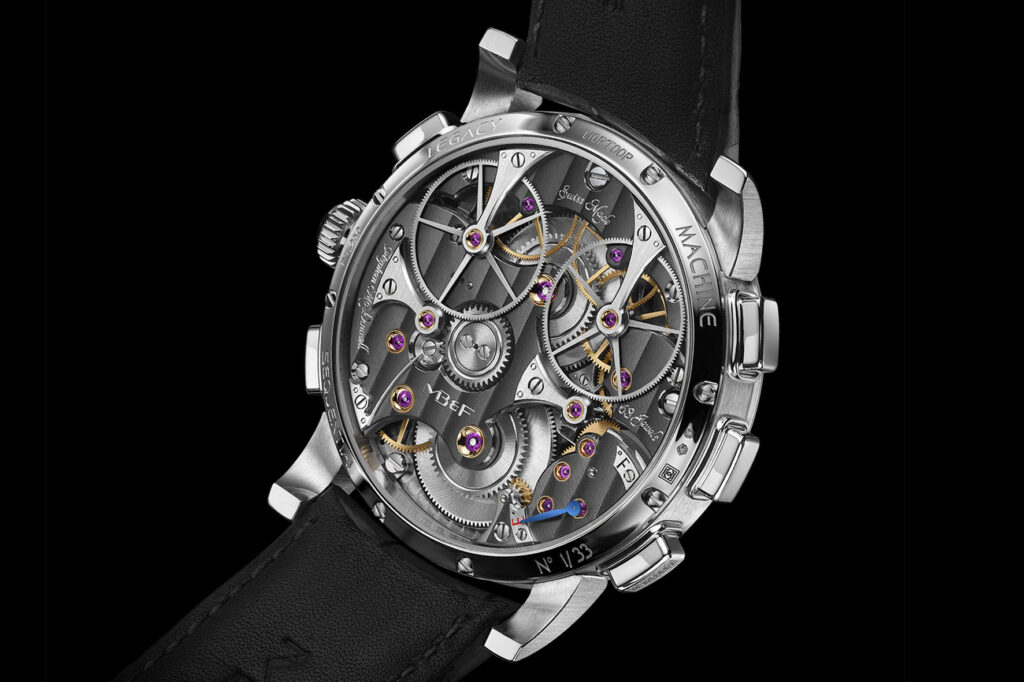
Cumulative mode:
In the work environment, you might want to know how much time you spend on two separate projects as you switch between them throughout the day. By starting one chronograph when you begin working on one task, and then using the Twinverter when you shift focus to the second task (switching again when you go back to the first), you can easily track the amount of time you cumulatively spent on each task. Another example of this usage is the timing of a chess match.
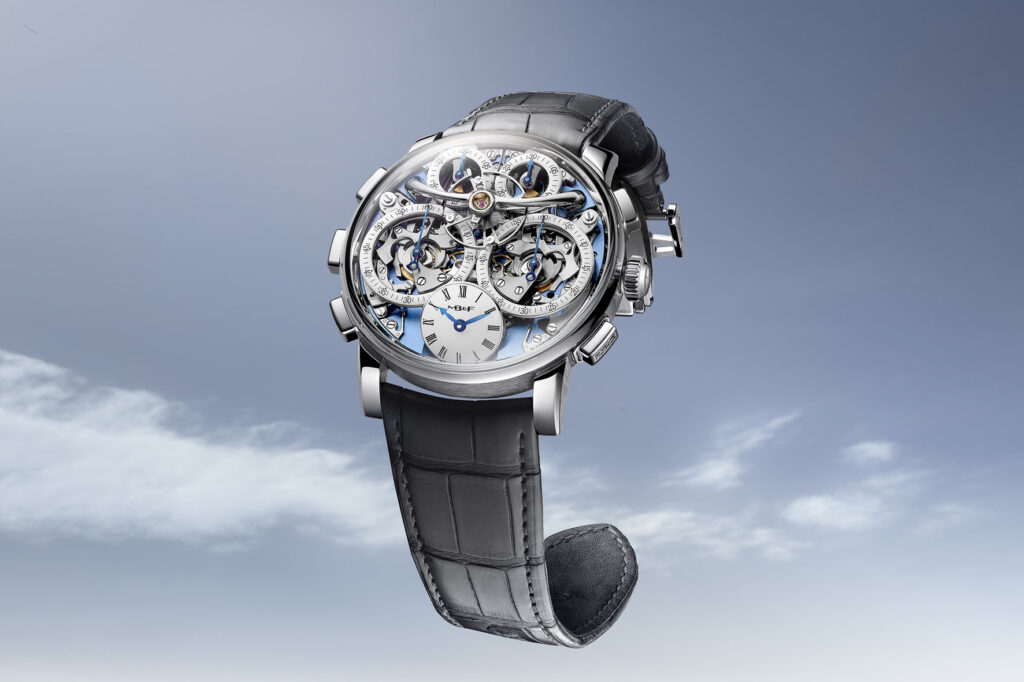
Sequential mode :
For those timing competitive sports, this mode can be used to measure individual lap times. Starting one chronograph at the beginning of an event and using the Twinverter upon the completion of a lap instantly launches the second chronograph in order to time the next lap, while the first chronograph is stopped, allowing ample time for the timing result to be noted down. The stopped chronograph can then be reset to zero, ready to be relaunched with the Twinverter for the following lap. Thanks to its minutes’ totalisers, the LM Sequential can be used effectively in sporting events with average lap times of over a minute (which includes the vast majority of motor sports).
Flyback mode:
The flyback was originally developed in the 1930s for airplane pilots, to allow accurate timing of flight paths from waypoint to waypoint. It was found that the time to stop, reset, and restart a chronograph took so long that errors in navigation would result, which would be compounded as these accumulated over the course of a journey with multiple legs. The flyback allowed this to be done simultaneously: stop, reset and restart in a single press on the reset pusher. Combining the new flyback function with the other timing modes of the Sequential calibre offers even more functionality. For example, a pilot can keep track of overall flight time on one chronograph, while using the other chronograph to accurately time each leg with the flyback function.
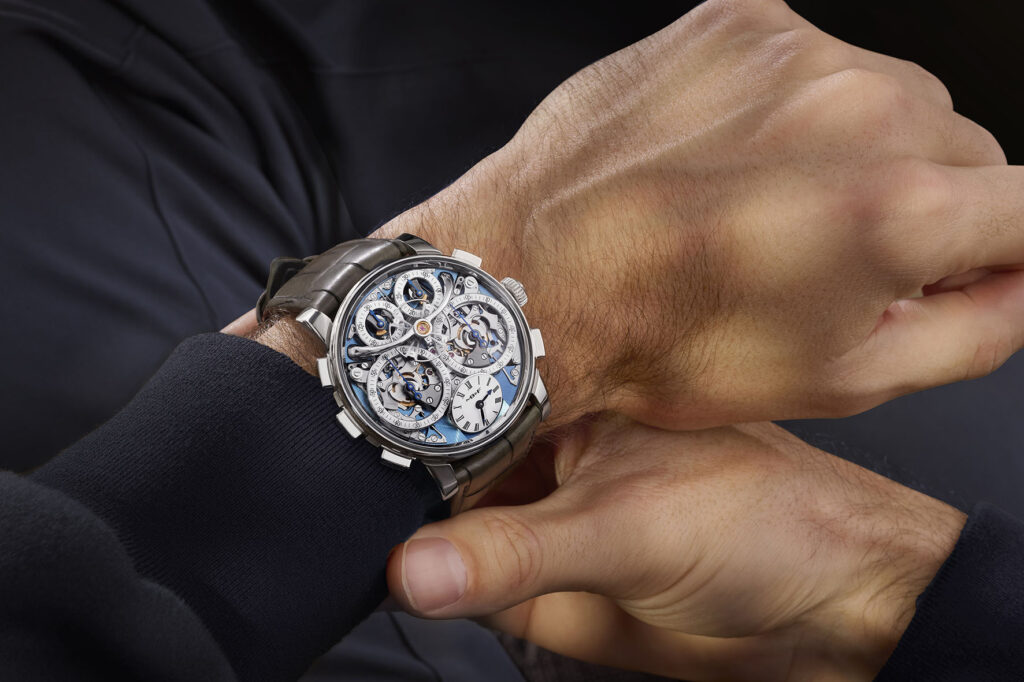
The design of the LM Sequential is completely unique. It encompasses two independent chronographs within a single movement, both of which are linked to a common escapement and oscillator. The energy losses associated with a conventional chronograph are well known, so imagine what can happen with two chronographs in a single movement? The losses would be doubled, resulting in unacceptably poor performance. All this functionality within a single watch required the invention of a fundamentally new type of chronograph system, one which would not be susceptible to any sort of energy losses.
This is exactly what the LM Sequential does, thanks to the use of its innovative internally-jewelled vertical clutches and their associated control system. The new flyback mechanisms also incorporate jewelled rollers. Thanks to these patented solutions, the Sequential calibre outperforms conventional chronographs in terms of energy efficiency and precision with a power reserve of 72 hours.
The new LM Sequential Flyback is offered in a limited edition of 33 pieces with a 44mm platinum case and sky blue dial with white lacquered counters topped by the classic domed glass. (Price €. 192,000 + VAT)

